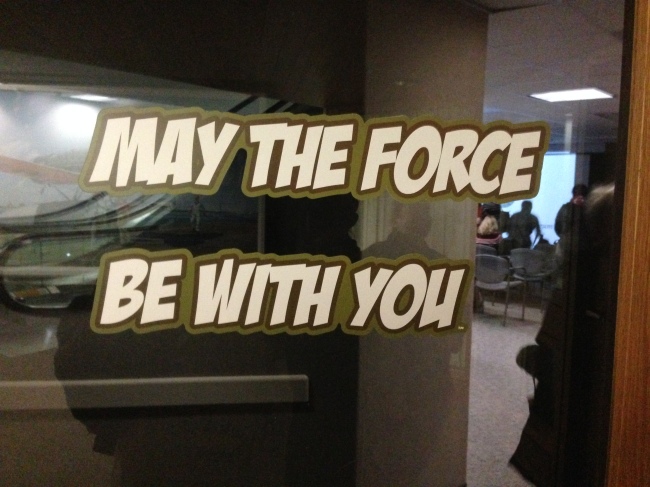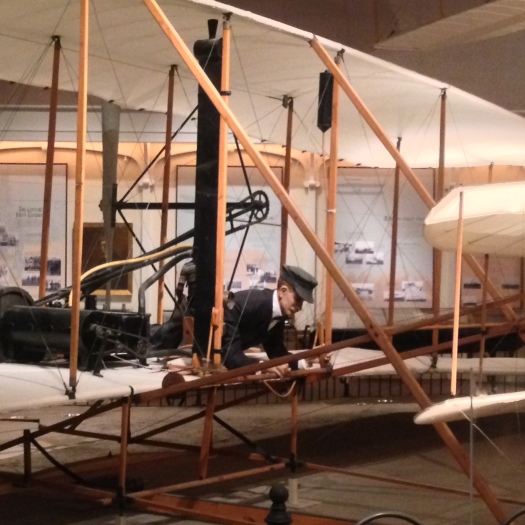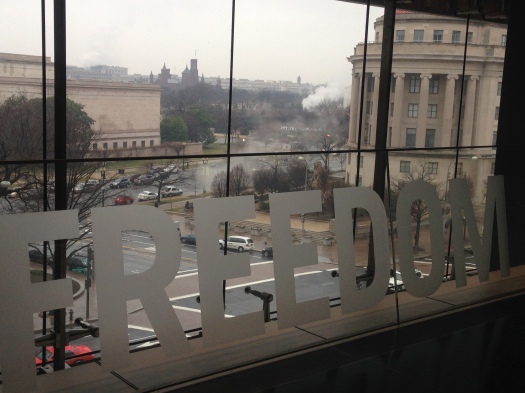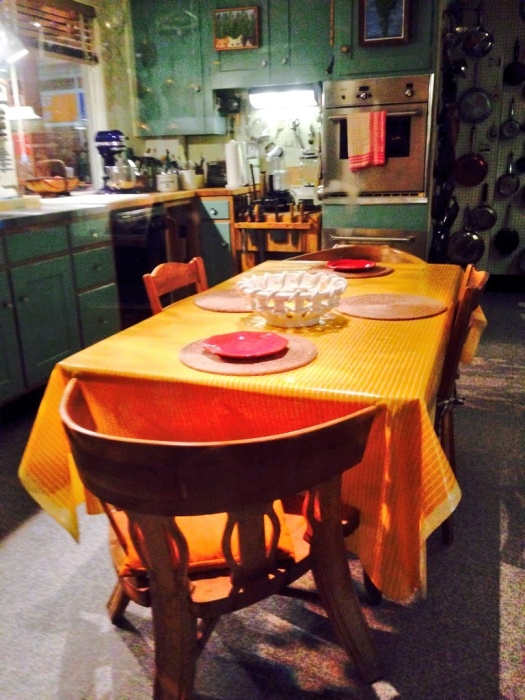I’ve had a little time to contemplate my weekend in New York City, a whirlwind stop on an amazing trip. Contemplation is one thing, having words is another. I was captivated as my dear friend Mike and I explored the Metropolitan Museum of Art’s Cloisters. At moments it was like walking through ancient streets, strolling through courtyards in a Madrid basilica, being before an altar in a cherished church of old. It was quite cold outside and light dusting of snow fell as we walked up the hill to the museum. My first glimpse was a bit magical.
What lives inside the museum walls mystifying. The Cloisters is home to much of the Metropolitan Museum of Art’s collection of religious objects and artifacts. It is built to look much like a building of another day. Stone walls, high ceilings and installations of architectural elements from buildings of another time and place. Columns of Italy and Spain, icons from altars that pilgrims traveled before which to pray.
I had to catch my breath at the next corner. I had made a pilgrimage of my own to stand amidst the unicorn tapestries. I guess I did not remember that this was their home from art history courses. This was for me a lifelong dream to be up close to glimpse the imagery of a mystical beast. How wonderful! One tapestry had been taken down for conservation. I was so tempted to peek below the tarp protecting the tapestry awaiting repair,
though I never would.
<
We stopped for a rest and sat on aged pew and gazed into an atrium as sun poured through the glass. As the morning’s snow melted and glistened, winter seemed to melt away too. A daydream, a gift, it was a cherished moment with a dearest friend that will not fade.
Sometimes a trip to a museum is much more than an outing. It can be a pilgrimage, a retreat, a shared experience and lifelong memory. It takes one away from the world one knows to someplace ancient or perhaps futuristic, beyond the imagination, a place where hopes and dreams are ever so real.
Click here to learn more about the cloisters.

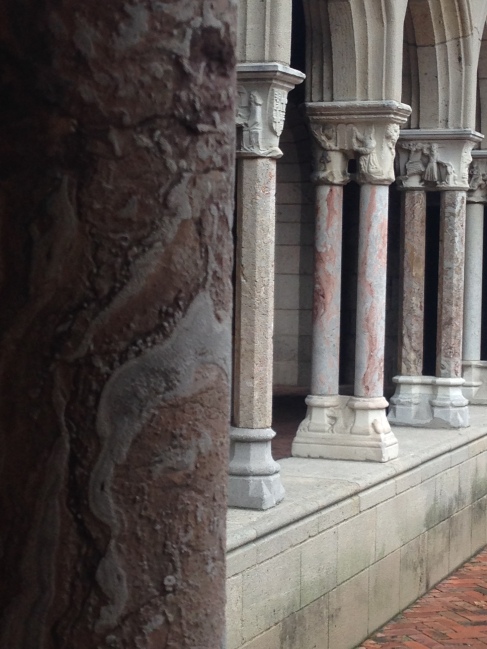
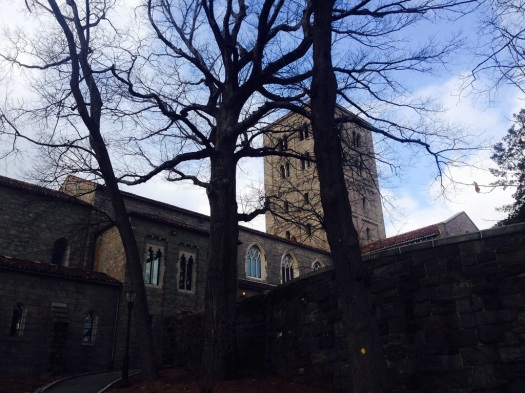
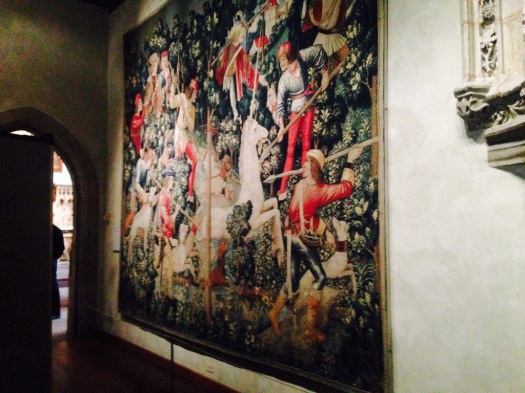
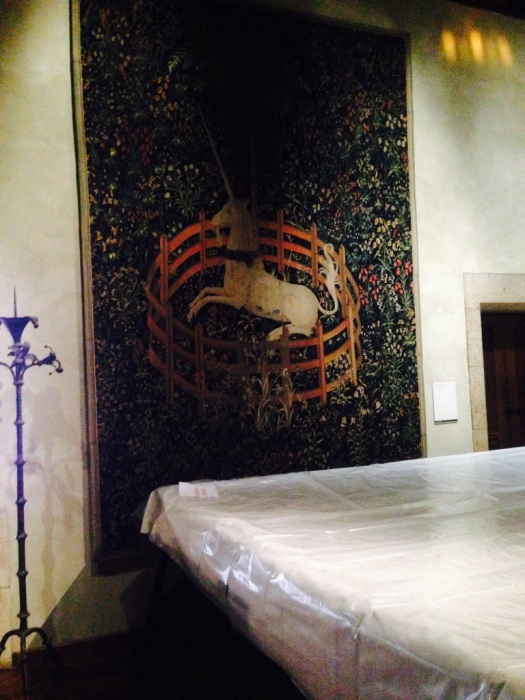
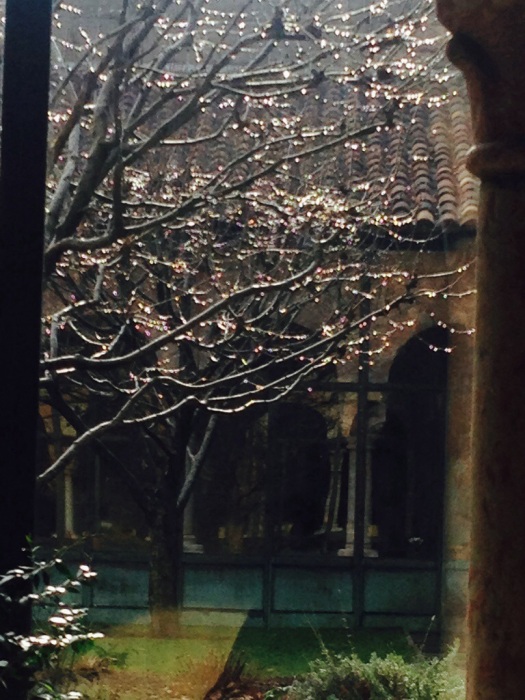 </a
</a








